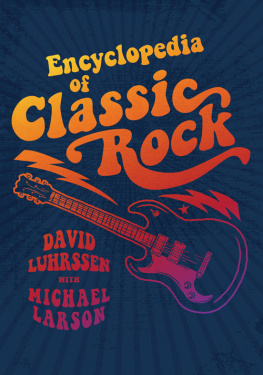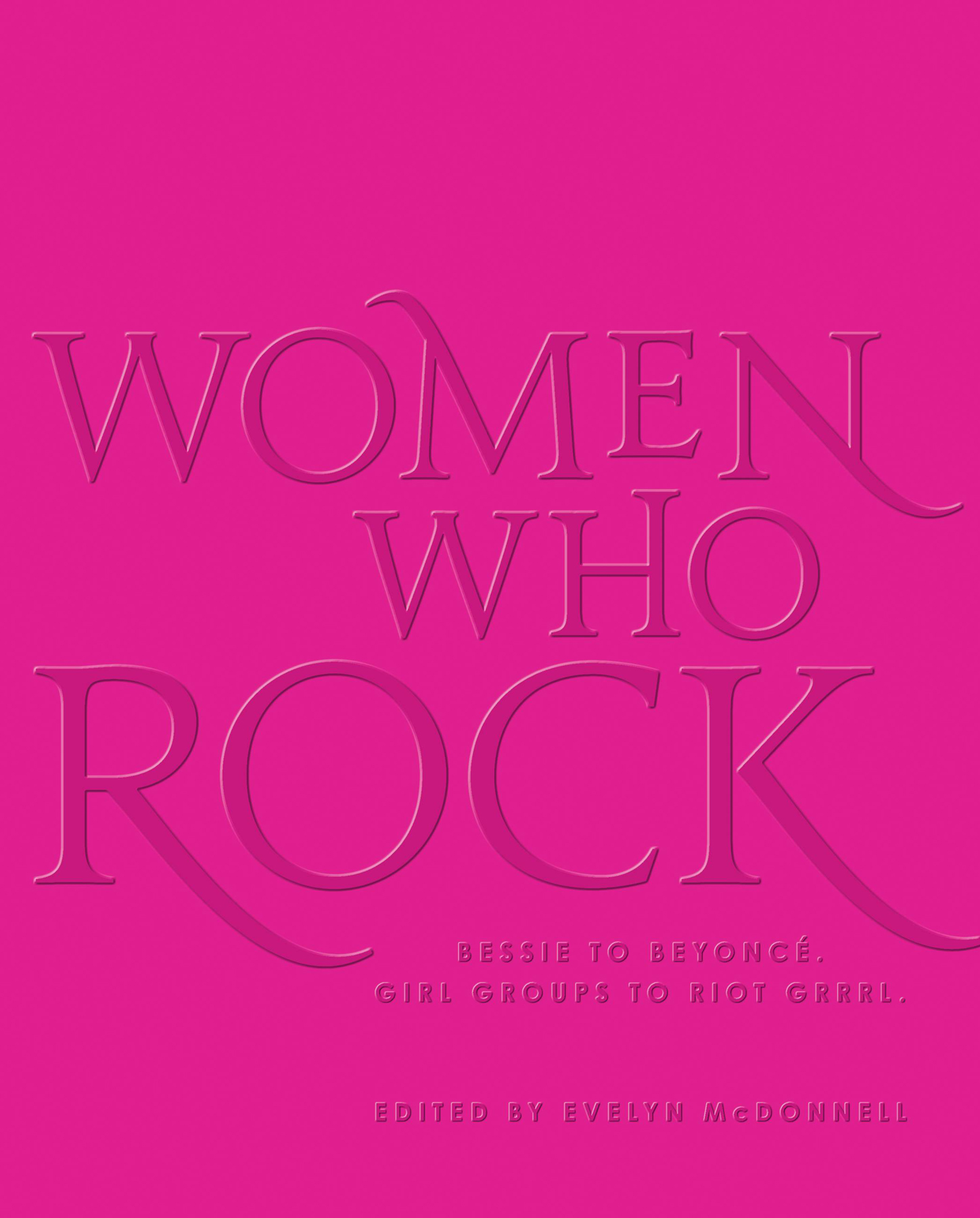Thank you for buying this ebook, published by HachetteDigital.
To receive special offers, bonus content, and news about ourlatest ebooks and apps, sign up for our newsletters.
Copyright 2018 by Evelyn McDonnell
Cover design by Amanda Kain
Cover copyright 2018 by Hachette Book Group, Inc.
Hachette Book Group supports the right to free expression and the value of copyright. The purpose of copyright is to encourage writers and artists to produce the creative works that enrich our culture.
The scanning, uploading, and distribution of this book without permission is a theft of the authors intellectual property. If you would like permission to use material from the book (other than for review purposes), please contact permissions@hbgusa.com. Thank you for your support of the authors rights.
Black Dog & Leventhal Publishers
Hachette Book Group
1290 Avenue of the Americas
New York, NY 10104
www.hachettebookgroup.com
www.blackdogandleventhal.com
First Edition: October 2018
Black Dog & Leventhal Publishers is an imprint of Running Press, a division of Hachette Book Group. The Black Dog & Leventhal Publishers name and logo are trademarks of Hachette Book Group, Inc.
The publisher is not responsible for websites (or their content) that are not owned by the publisher.
The Hachette Speakers Bureau provides a wide range of authors for speaking events. To find out more, go to www.HachetteSpeakersBureau.com or call (866) 376-6591.
Print book interior design by Elizabeth Van Itallie
Library of Congress Cataloging-in-Publication Data
Names: McDonnell, Evelyn, editor.
Title: Women who rock : Bessie to Beyonce. Girl groups to riot grrrl / [edited by] Evelyn McDonnell.
Description: First edition. | New York, NY : Black Dog & Leventhal, 2018.
Identifiers: LCCN 2018000198| ISBN 9780316558877 (hardcover) | ISBN 9780316558860 (ebook)
Subjects: LCSH: Women musiciansBiography. | Women singersBiography. | Women rock musiciansBiography. | MusiciansBiography.
Classification: LCC ML82 .W688 2018 | DDC 782.42164092/52 [B]dc23
LC record available at https://lccn.loc.gov/2018000198
ISBNs: 978-0-316-55887-7 (hardcover); 978-0-316-55886-0 (ebook)
E3-20181121-JV-PC-COR
To my momwhose singing around the house instilled love of music in my heartand to yours.

I n the beginning, there was rhythm. So shrieked teenaged Ari Up with full-throated joy over the herky-jerk of Viv Albertines guitar, the dub lope of Tessa Pollitts bass, and helter-skelter drums by Budgie (Soiuxsie Siouxs beau) in a 1980 song by English punk tarts the Slits. Rhythmthe repeated ordering of breaks and beats, of stops and starts, of motion and stillness, of life and deathgives popular music its pulse, its purpose. Rhythm is the pattern that propels us, onto the dance floor or maybe, with Martha Reeves and her Vandellas, into the street to dance. Grace Jones warned us about being slaves to the rhythm, or was she inviting us? Janet Jackson founded a Rhythm Nation. We can move to the rhythm, but also, crucially, we can move the rhythm. We are a rhythm movement.
Ari was a rhythm mover. With her bandmates, she created not just a new way of making music but of being in the world. A German waif plunked down into the cruel streets of Thatchers London calling, the woman born Arianna Forster generated vocalizations with the wild abandon of an alien autodidact. She didnt just absorb the punk disruptions of such peers as Johnny Rotten; she propelled them, pulling notes like taffyup and down, in and outtesting the bounds and elasticity of pitch, tone, volume. Ari cut her own path stylistically, too, with her ragged layers and spandex leggings. Sure, she sported that most dubious of dos: blond dreadlocks. But she wasnt so much from northern Europe as from another planet, and eventually she decided to leave the colonizer for the colonies, reinventing herself as late-night dancehall groover Medusa in Jamaica. When I met her in New York in the nineties, she was a widow, a single mother, a legend, a characterand also someone just trying to figure out how to get by, to make her art and raise her children.
All the people in this book are rhythm movers: the musicians, the writers, the illustrators. They have not merely tried to fit into the grooves of popular music (or scholarship, or art) but have jumped the beat. They are musicians who inspire and compel us, the editors, writers, and illustrators of Women Who Rock. They also inspire other musiciansin fact, many of the contributors to these pages are musiciansby carving out sonic possibilities, by kicking down the doors through which their followers charge. They are pioneers more than settlers, explorers but not necessarily popularizersmothers of invention. They are Sister Rosetta Tharpe, pulling the gospel out of a guitar. Selena, embodying the multiple cadences of border culture. Bjrk, dancing beside you in a virtual reality video then stepping inside youor are you stepping inside her? Beyonc, commanding, World stop! in a video alongside her bestie Nicki Minaj then chuckling, Carry on. Women who bend, break, and create code tend to be dismissed as weirdos, freaks, divas, or bitches. This book honors them as heroes, leaders, geniuses, and, in Miami rapper Trinas phrase, da baddest bitchesas women who rock.
Early in the process of creating this book, my collaborators and I agreed that rather than attempt to be encyclopedic and all inclusive, summarizing the thousands of women who have made incredible, indelible music in the last century, we wanted to tell a narrative story by focusing on key select figures who were true game changers. From the beginning, we had the concept of women who rock, which we knew was not a new phrase, and which we were fully aware was problematic even at the most basic semantic levelbut which we also felt had a simple, direct power. Women. Who. Rock.
Women. We love women. That doesnt mean we hate men or overlook folks who fall somewhere in between the two poles of gender (from Big Mama Thornton to Joan Jett to Laura Jane Grace). But we also recognize the centuries of oppressive systems that have conscripted humans born with child-bearing hips (as PJ Harvey says) into hard domestic labor and barred their self-expression and public lives. Much of my work as a journalist, critic, and historian has been spent trying to describe and remedy the obstacles women musicians and writers face, and to celebrate the work they do despiteor perhaps because ofthose obstacles. Carole King wrote some of the greatest pop songs of all time while she was a young mother in a bad relationship with her songwriting partner. A teenager named Alicia Armendariz found refuge from her violent father in LAs punk rock community and reinvented herself as Alice Bag. Janet Jackson broke away from binding family ties to assert control of her own career, music, image, and life.
We chose to make a book about women because there is strength in unitydivided, we fall. Were not arguing that these music makers are all formally or stylistically linked. This isnt a book about the genre womens music (though Alice Bag does salute June Millington and Olivia Records in the essay she penned) or even, necessarily, an embodiment of Hlne Cixouss call for criture feminine











